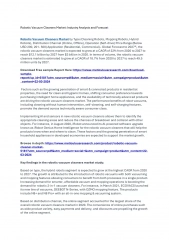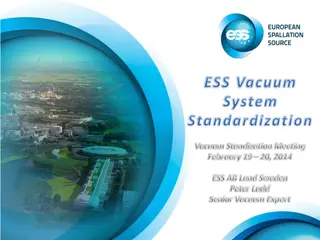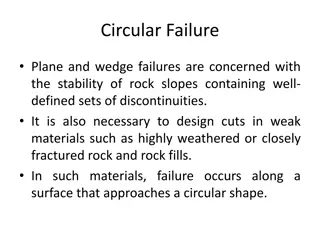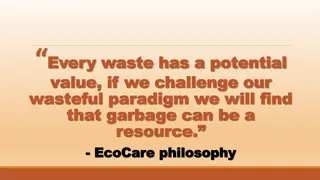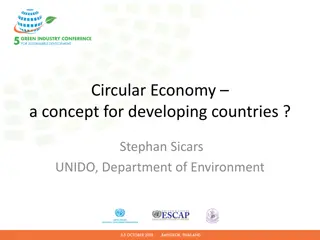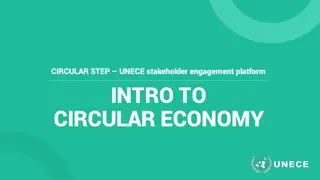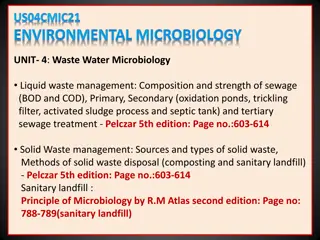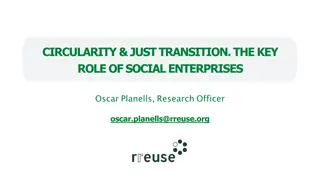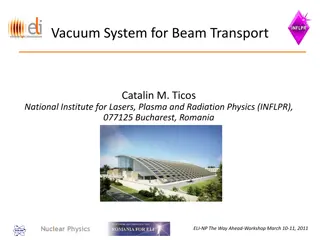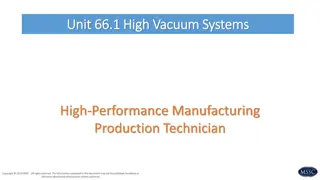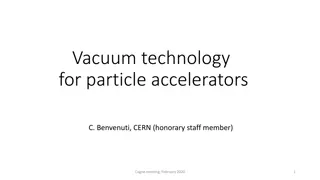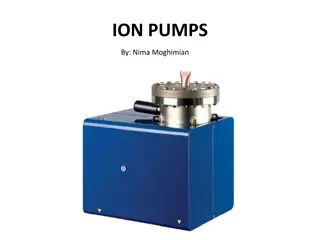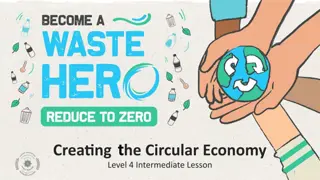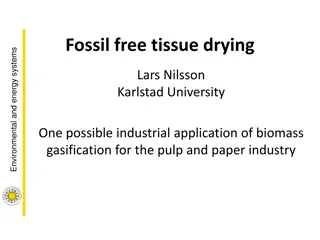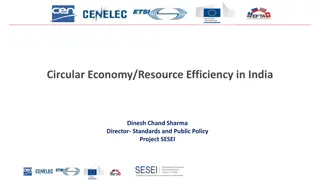Vacuum Gasification of Waste: A Step Towards a Circular Economy
Vacuum gasification of waste is a cost-efficient and environmentally friendly solution contributing to the circular economy. The EU has set targets for recycling and reducing landfill waste, aiming to avoid millions of tons of greenhouse gas emissions by 2035. The transition from a linear to a circular economy model involves increased recycling targets and separate collection obligations for various types of waste, promoting sustainability and resource efficiency.
Download Presentation

Please find below an Image/Link to download the presentation.
The content on the website is provided AS IS for your information and personal use only. It may not be sold, licensed, or shared on other websites without obtaining consent from the author.If you encounter any issues during the download, it is possible that the publisher has removed the file from their server.
You are allowed to download the files provided on this website for personal or commercial use, subject to the condition that they are used lawfully. All files are the property of their respective owners.
The content on the website is provided AS IS for your information and personal use only. It may not be sold, licensed, or shared on other websites without obtaining consent from the author.
E N D
Presentation Transcript
VACUUM GASIFICATION OF WASTE ENVIRONMENTALLY FRIENDLY AND COST EFFICIENT CONTRIBUTION TO THE CIRCULAR ECONOMY 2015 - EU action plan for the Circular Economy 2018 - Revised legislative framework on waste has entered into force More than 500 million tons of greenhouse gas could be avoided between 2015 and 2035, directly by cutting emissions from landfills and indirectly by recycling materials. On 4 March 2019, the European Commission adopted a comprehensive report on the implementation of the Circular Economy Action Plan. 17 May, Sofia, 8th Regional Energy Conference Today s Agenda of The Regional Energy Development Priorities, Technologies, Markets
The Circular Economy is an economic model wherein planning, resourcing, procurement, production, reprocessing are designed and managed, as both process and output, to maximize ecosystem functioning and human well-being Circular Economy System Diagram (Ellen MacArthur Foundation, 2015) 17 May, Sofia, 8th Regional Energy Conference Today s Agenda of The Regional Energy Development Priorities, Technologies, Markets
Revised EU waste proposal - Transition from linear to circular eonomy include: A common EU target for recycling : 65% of municipal waste by 2035; 70% of packaging waste by 2030; Recycling targets for specific packaging materials: Paper and cardboard: 85 % Ferrous metals: 80 % Aluminium: 60 % Glass: 75 % Plastic: 55 % Wood: 30 % Binding landfill target to reduce landfill to maximum of: 10% of municipal waste by 2035; Separate collection obligations strengthened and extended to : Hazardous household waste (by end 2022), bio-waste (by end 2023), textiles (by end 2025). 17 May, Sofia, 8th Regional Energy Conference Today s Agenda of The Regional Energy Development Priorities, Technologies, Markets
Landfilled waste in EU by countries - Zero landfilled : Germany, Belgium, Netherlands, Sweden - 70-90% landfilled : EU countries East from Czech Republic Bulgaria 17 May, Sofia, 8th Regional Energy Conference Today s Agenda of The Regional Energy Development Priorities, Technologies, Markets
The interconnected phenomena that is happening on our planet : The need for energy and the problem of waste. Energy and waste policies and systems share mutual concern: -Environmental impacts that include reductions of GHG, soil contamination, and water contamination. -The problem of waste is an answer to energy needs. WTE has become one of the most commonly used technologies in Europe used to address waste management with municipal solid waste 17 May, Sofia, 8th Regional Energy Conference Today s Agenda of The Regional Energy Development Priorities, Technologies, Markets
Non-recyclable waste a source of cheap renewable energy - Residual biomass from forestry, parks, agriculture, animal and chicken farms - Waste from food, paper, building, oil, pharma, light, chemical and processing industries - Residual Derived Fuel (RDF) from municipal waste separation plants - Sludge from waste water treatment plants - Domestic waste from non-metal furniture, organic and synthetic textile, non-metal waste from end-of-life vehicles - Bone/meat waste from meat industry - And more .as the hydrocarbons are all around. The more energy recovery, the less landfilled waste 17 May, Sofia, 8th Regional Energy Conference Today s Agenda of The Regional Energy Development Priorities, Technologies, Markets
Waste-to-Energy technologies - Burning (incineration, oxidation) and heat utilization - Thermal decomposition (pyrolisis, gasification, plasma gasification) synthetic oil and gas utilization Incineration vs Gasification: Comparison chart based on same capacity of feedstock: Parameter Incineration Gasification Energy efficiency 55% 95% Air burning oxidation - dioxins, furans, fine particles Yes No Size of equipment, CAPEX, operation costs 100% 60% Time period for design, delivery, start 100% 50% Modular design, flexibility for resizing, optional mobile version No Yes Hazardous residual for landfill Yes No Precise process control , option for remote/postponed use of the energy No Yes 17 May, Sofia, 8th Regional Energy Conference Today s Agenda of The Regional Energy Development Priorities, Technologies, Markets
Gasification plants for waste worldwide Although the gasification as thermal decomposition technology is not new, it shows rapid development in the last 4-6 years. At the same time many incineration plants are closed in USA and EU, projects for new incinerators are cancelled. The new WtE projects are mostly gasifiers. Main reasons for this trend are both ecological and economical, as seen in the comparison chart. 17 May, Sofia, 8th Regional Energy Conference Today s Agenda of The Regional Energy Development Priorities, Technologies, Markets
The Gasification Industry (2013) - Worldwide - 272 operating gasification plants with 686 gasifiers. - 74 plants under construction worldwide with a total of 238 gasifiers to produce 83 MWth. - 33 gasification plants in the United States , 110 in Japan - Asia/Australia: Increase of natural gas prices boosts gasification for chemical, fertilizer, and coal-to-liquids industries - China has the largest number of gasification plants, incl. coal-to-syngas. 17 May, Sofia, 8th Regional Energy Conference Today s Agenda of The Regional Energy Development Priorities, Technologies, Markets
Different WtE gasification technologies Heating of feedstock: -Direct - internal -Indirect - external Configuration: -downdraft fluidized bed -updraft -entrained bed -auger driven horizontal, stand-alone syngas output Air access: -with limited air access Direct feedstock heating : Syngas - heat steam - power -no air access -negative pressure (vacuum) Stages: - Single chamber gasifier - Two chambers gasifier -Three zones gasifier Plasma gasification: -High temperature plasma torch Indirect feedstock heating (vacuum gasifier) : - Syngas as clean fuel gas turbine, gas engine power, heat. - Transportable fuel. 17 May, Sofia, 8th Regional Energy Conference Today s Agenda of The Regional Energy Development Priorities, Technologies, Markets
Energy recovery by vacuum gasification: zero landfilled waste Two stage gasification Stage 1: Pyrolisis gasification at 450 deg C - no air Stage 2: Steam added gasification at 860 deg C no air, boost hydrogen contents of syngas Syngas treatment - cleaning, cooling Syngas burning in power genset Flue gas recirculation for feedstock heating Energy efficiency with cogeneration 85-90% 17 May, Sofia, 8th Regional Energy Conference Today s Agenda of The Regional Energy Development Priorities, Technologies, Markets
Distributed waste-to-energy plants - practical solution for small scale and mobile gasification plants The gasification technology is flexible to offer: Fast and easy design and construction Mobile installation for local needs 17 May, Sofia, 8th Regional Energy Conference Today s Agenda of The Regional Energy Development Priorities, Technologies, Markets
Waste-to-Energy technology in Bulgaria With zero WtE plants in 2019, Bulgaria can be considered an open and full of opportunities market for the technology / equipment vendors. For the Bulgarian state institutions, responsible for the environmental protection, municipalities and public structures related with the energy supply, this can be the best opportunity to select the best up-to-date and innovative technologies. No need to spend on modernization of existing old plants, with low efficiency and environmental standards. The proper national strategy should be based on: -Expert analysis of the existing technologies and expertise -Choosing the most efficient and optimal solutions to suit the needs -Integral approach in accounting all aspects of each project -Vision for the future, planning based on scientific forecasts regarding environment, industry and society. 17 May, Sofia, 8th Regional Energy Conference Today s Agenda of The Regional Energy Development Priorities, Technologies, Markets
l.dimitrov@edimit.com 17 May, Sofia, 8th Regional Energy Conference Today s Agenda of The Regional Energy Development Priorities, Technologies, Markets


